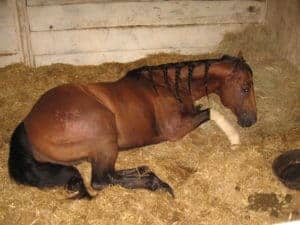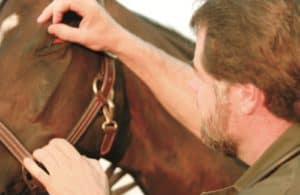
Managing Dehydration, Exhaustion in Horses (AAEP 2012)
With proper management, most horses recover well from dehydration and exhaustion.


With proper management, most horses recover well from dehydration and exhaustion.

A team evaluated a possible association between distal border fragments of the navicular bone and lameness.

MRI could detect bone changes indicating a horse is at risk for catastrophic fractures before accidents occur.

Penetrating injuries can have serious consequences for horses, but vets are well-versed in handling them.

Researchers recently evaluated adult progenitor cell characteristics from healthy and laminitic horse hooves.
If you’re like me, you love talking about, caring for, and pampering your senior horses. Yes, they may be old, but they’re still so full

Dysphagic foals require immediate, specialized care to ensure they begin life without a nutritional deficit.

Researchers have worked tirelessly to better understand the disorder, its causes, and how to best manage it.

Non-weight-bearing lameness is one of the most common emergencies practitioners manage in the field.
One of the phrases that comes out of my mouth frequently is “I wish I could do more.” I wish I could give, donate, and
Tests were carried out after a horse in England tested positive for the disease in October 2012.

The acutely swollen eye can present many diagnostic challenges to the field practitioner.
I consider myself pretty lucky to live and work in the region I do. Central Kentucky is one of the largest–if not the largest–Thoroughbred nurseries
Most senior horse owners–myself included–want nothing more than to keep their charges healthy and kicking for as long as possible and will go to great
This dynamic endoscope is currently the only such tool in the state of Wisconsin, the school reported.

The final quarantines connected to the outbreak were released in late December, according to the summary.
Stay on top of the most recent Horse Health news with